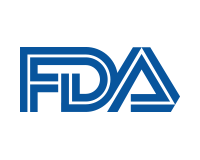United States Department of Health and Human Services

United States Food and Drug Administration: Publications
Date of this Version
2017
Document Type
Article
Citation
Environmental and Molecular Mutagenesis 58:466-476 (2017).
Abstract
Large-scale sequencing efforts have described the mutational complexity of individual cancers and identified mutations prevalent in different cancers. As a complementary approach, allele specific competitive blocker PCR (ACB-PCR) is being used to quantify levels of hotspot cancer driver mutations (CDMs) with high sensitivity, to elucidate the tissue-specific properties of CDMs, their occurrence as tumor cell subpopulations, and their occurrence in normal tissues. Here we report measurements of PIK3CA H1047R mutant fraction (MF) in normal colonic mucosa, normal lung, colonic adenomas, colonic adenocarcinomas, and lung adenocarcinomas. We report PIK3CA E545K MF measurements in those tissues, as well as in normal breast, normal thyroid, mammary ductal carcinomas, and papillary thyroid carcinomas. We report KRAS G12D and G12V MF measurements in normal colon. These MF measurements were integrated with previously published ACB-PCR data on KRAS G12D, KRAS G12V, and PIK3CA H1047R. Analysis of these data revealed a correlation between the degree of interindividual variability in these mutations (as log10 MF standard deviation) in normal tissues and the frequencies with which the mutations are detected in carcinomas of the corresponding organs in the COSMIC database. This novel observation has important implications. It suggests that interindividual variability in mutation levels of normal tissues may be used as a metric to identify mutations with critical early roles in tissue-specific carcinogenesis. Additionally, it raises the possibility that personalized cancer therapeutics, developed to target specifically activated oncogenic products, might be repurposed as prophylactic therapies to reduce the accumulation of cells carrying CDMs and, thereby, reduce future cancer risk.
Included in
Dietetics and Clinical Nutrition Commons, Health and Medical Administration Commons, Health Services Administration Commons, Pharmaceutical Preparations Commons, Pharmacy Administration, Policy and Regulation Commons


Comments
U.S. government work.